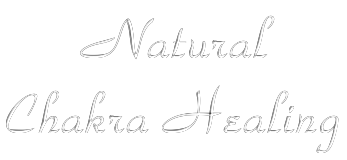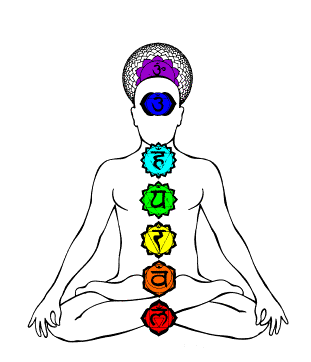The Different Types of Yoga
Yoga is a holistic health practice which can be used as a fitness tool, but it is also a spiritual practice and discipline. There are several different styles of yoga, and although the benefits of all of them are the same, each different form of yoga can have unique purposes and benefits. It's best to become familiarized with these different styles of yoga to find the right to practice on a consistant basis. For beginners, hatha yoga is the most ideal, as well as astanga yoga since many different other forms and techniques can be picked up from there.
Hatha Yoga
Hatha yoga is the most widespread form of yoga. It is a form of yoga which aims to free an individual from the conflicting and competing stresses of life. The word 'Hatha' means Sun (ha) and Moon (tha). This style of yoga uses deep breathing while following the flow of energy through the body. Hatha yoga is a great style for beginners to try due to its slow, gentle and flowing movements with very basic positions. Hatha helps to cleanse, nurture and nourish the physical body. Practicing this form of yoga on a regular basis, like all forms of yoga, helps to intergrate the body, mind and soul. There is also a more advanced form of Hatha for those who are more experienced with yoga, and Hatha styles such as Ananda Yoga which used various postures for breathing and to awaken subtle energies inside.
Hatha yoga (also called hatha vidya) dates back to the fifteenth century and was founded by Yogi Swatmarama. Thisancient hatha yogic is a divine path that encompasses morals and ethics and creates harmony throughout one's entire being.
Bikram Yoga
Bikram yoga, another popular form, is generally referred to as hot yoga. This style of yoga is practiced in a room where the temperature is around 37 degrees (40 degrees celcius) with 40% humidity level in the room. This is thought to help loosen the muscles and induce sweating which has a very cleansing effect on the body. Bikram yoga warms the body and stretched the muscles. It is practiced as a set of 26 specific positions and 2 detailed breathing control exercizes, and depending on the particular class or level of skill involved, some or all of these postures may be used. This form of yoga is more physical based rather than contemplative or meditate, and is often a stepping stone to other styles of yoga.
Bikram yog was founded by Bikram Choudhury and its main philosophy is to achieve better breathing as well as improved blood flow and circulation throughout the body. Bikram yoga should especially be taught and practiced by a trained and licenced practioner in order to provide a safe environment for students.
Bhakti Yoga
Bhakti yoga is a more contemplative yoga style. It is a more spiritual form of yoga used for devotion to a higher power and teaches the love of all beings by opening the mind and awakening the energy of the heart. It is a multi-faith practice so focus can be on any personal or Divine being one chooses. In Bhakti yoga, rather than a set of postures or breathing exercises, this style consists of a series of meditations, singing, dancing, chanting or praying. Bhakti yoga is also unique because extends the spiritual aspect of its practice to watching spiritual or religious movies or reading spiritual books.
Ashtanga or Raja Yoga
Raja yoga is often referred to as 'classical yoga, or Ashtanga Yoga. This style of yoga focuses on two types of breath, which is the most important aspect of life. Ashtanga is a faster paced yoga style with quick and active movements. This is a more advanced form of yoga since it is more physically demanding. Ashanga yoga involves a series of positions that are repeated in sequence. Participants of this style often memorize specific body postures, and teachers may adjust the movements and postures as well. This form of yoga strengthens the body and improves energy and stamina. Ashtanga yoga is derived from the teachings of Sri Pattabhi Jois and Sri Krishnamacharya. This practice also helps to stimulate and harmonize the mind, and to help manage the control of the emotions in addition to preforming the postures.
Kundalini Yoga
Kundalini yoga is the most comprehensive of all the yoga styles. It combines meditation, mantra, breathing, and physica exercises. This form is more focused on the spiritual aspect of yoga rather than achieving perfect postures. Kundalini yoga uses rapid movements, deep and relaxed breathing, and chanting to express love of the Divine. In this form of yoga, the specific and fast movements are timed to particular mantras, chants, breathing or meditations. Kundalini yoga is thought to connect your heart space to your conscious mind. There are also specific sets of movements and matching actions to cleanse every part of the body in kundalini yoga.
Iyengar Yoga
Iyender Yoga concerns itself mostly with the correct posture and positioning of the body while preforming the exercises. In this style of yoga it is important to hold the particular postures for an extended period of time. In Iyender yoga, alignment is the key. There is often the use of specific tools to aid the yoga practice, such as mats, balls, blankets and steps, all of which can help to improve the posture while preforming the moves. Iyender also focuses on the proper alignment and shape of the body while remaining in the various postures for long durations, insteading of changing poses such as which ashtanga yoga. Props are mostly required in Ibengar yoga in order to achieve the right alingment.
Prasara Yoga
Prasara is a unique style of yoga. Its dynamic method of practice will help you move better and feel better, while learning ways to move your body in a fun and interesting way. It really is a different style of yoga because Prasara was created to develop flow or specifically a mental state that is often referred to by athletes as "being in the zone." This quality of movement allows you to transition smoothly from one thing to another. The unique element of Prasara practice as opposed to most other styles of yoga, is that instead of sitting in specific poses for a duration of time, Prasara shifts the emphasis to flowing transitions between the poses, helping you to develop agility, grace, power and flow in everything you do. Learn more about Flow Yoga.





